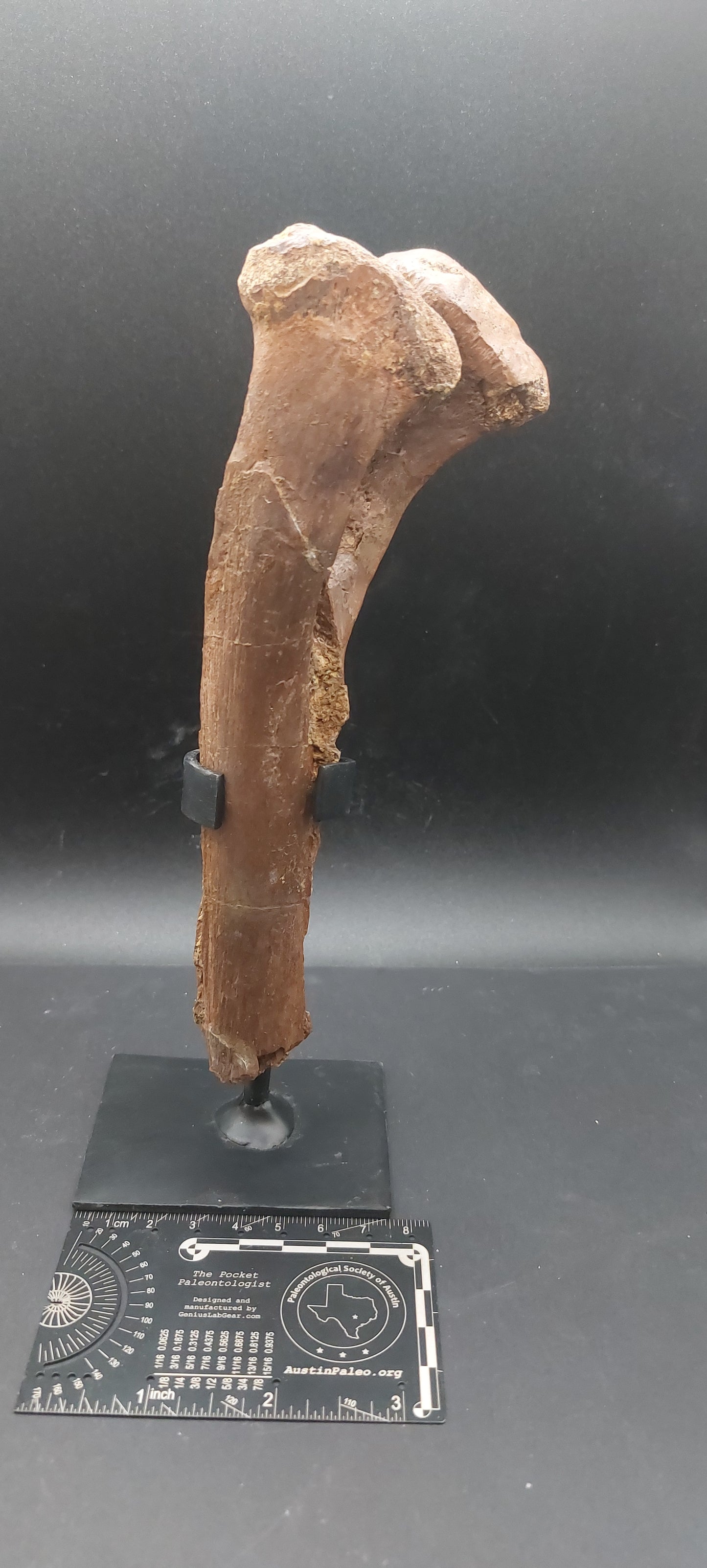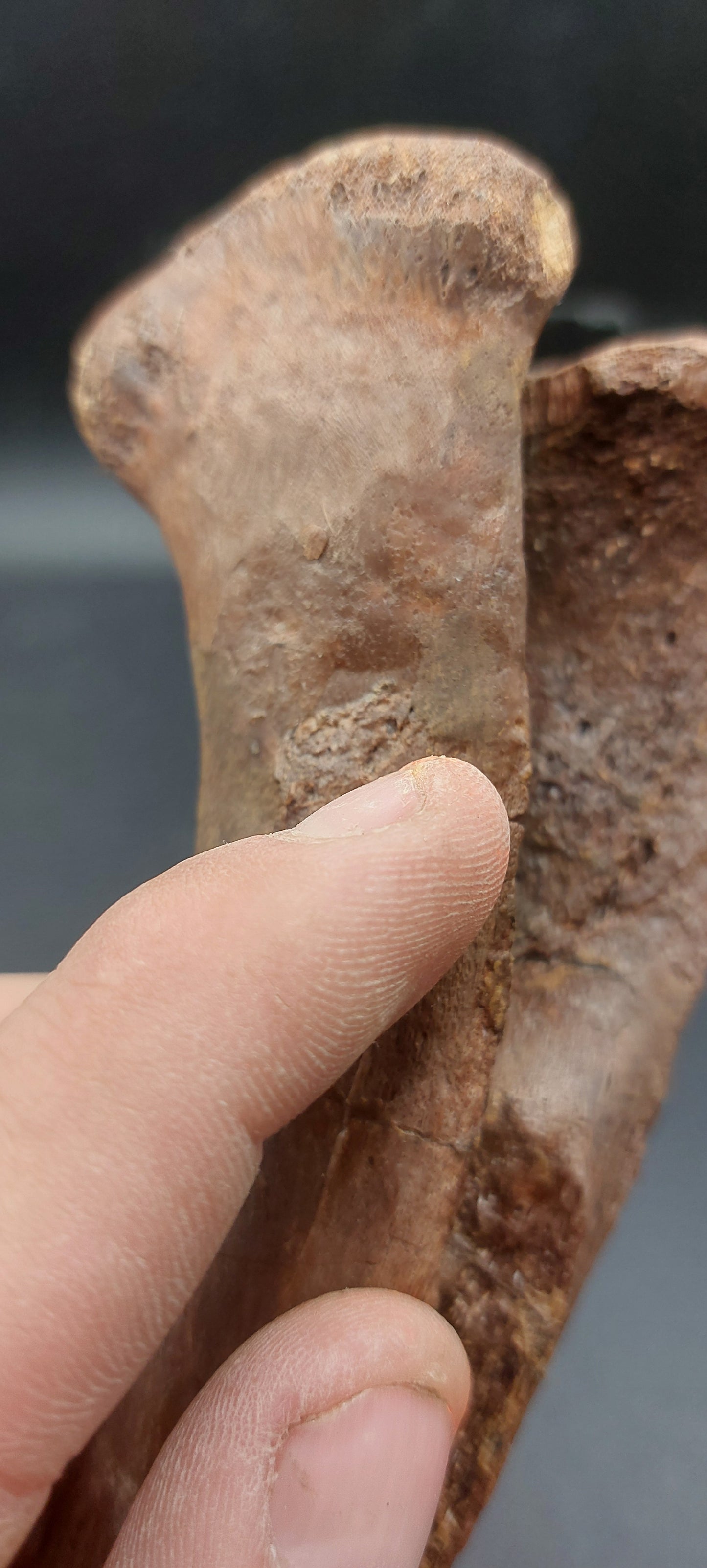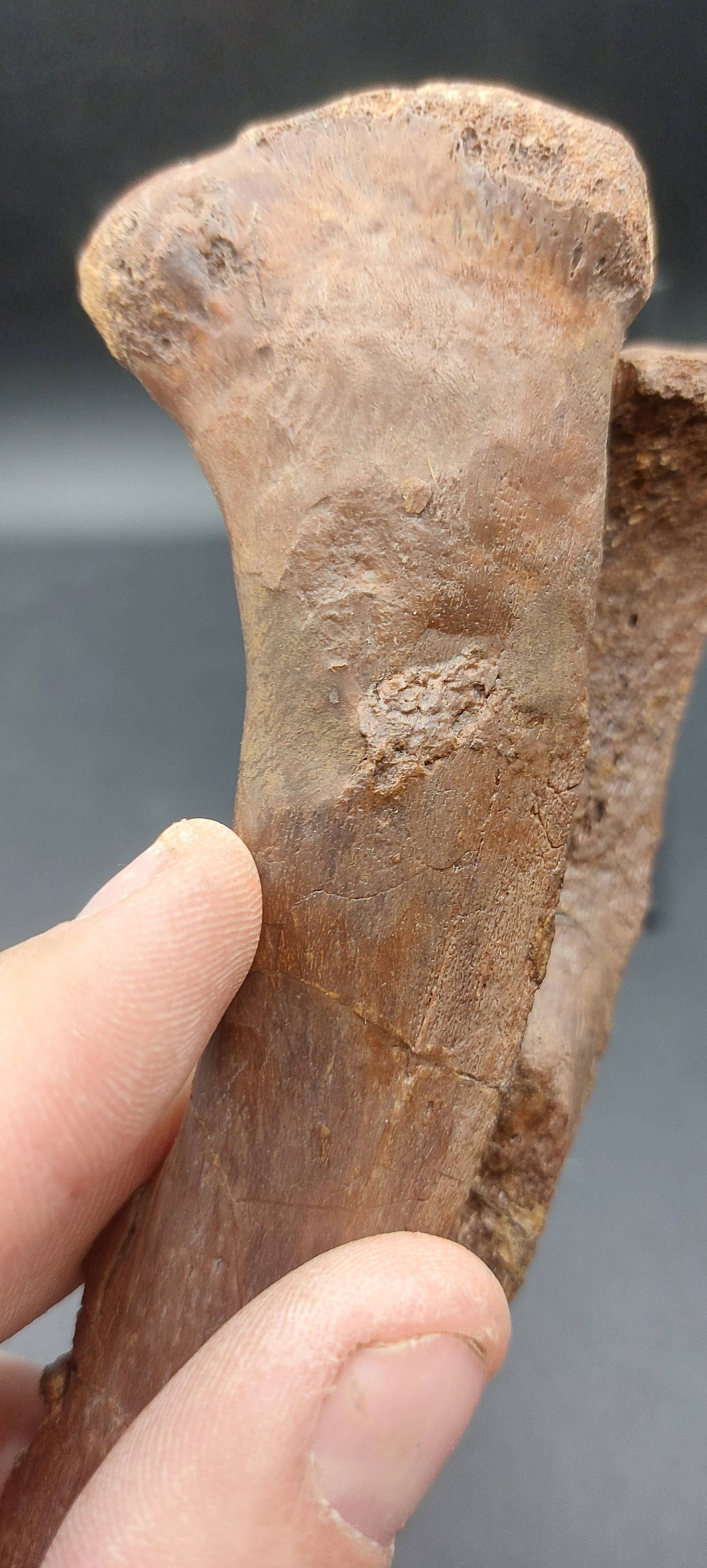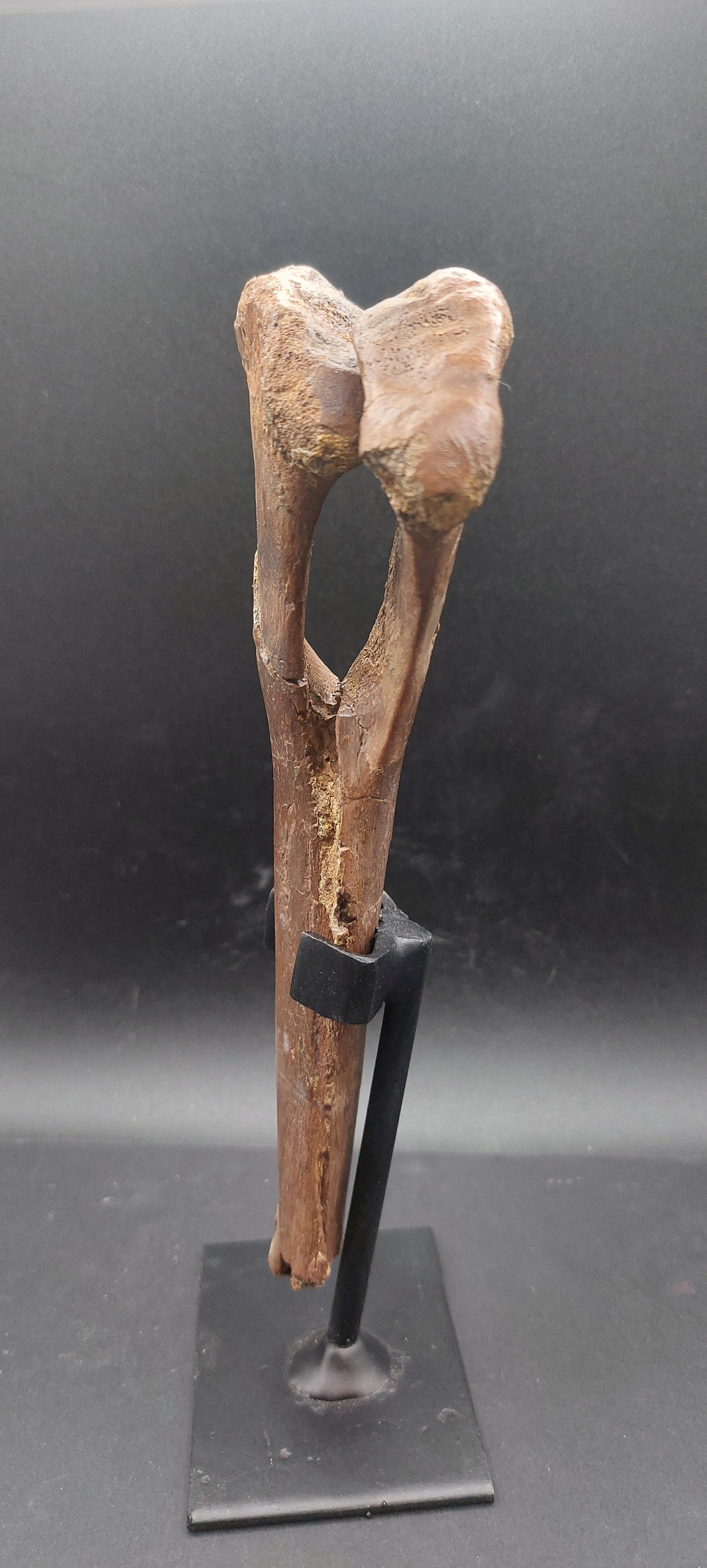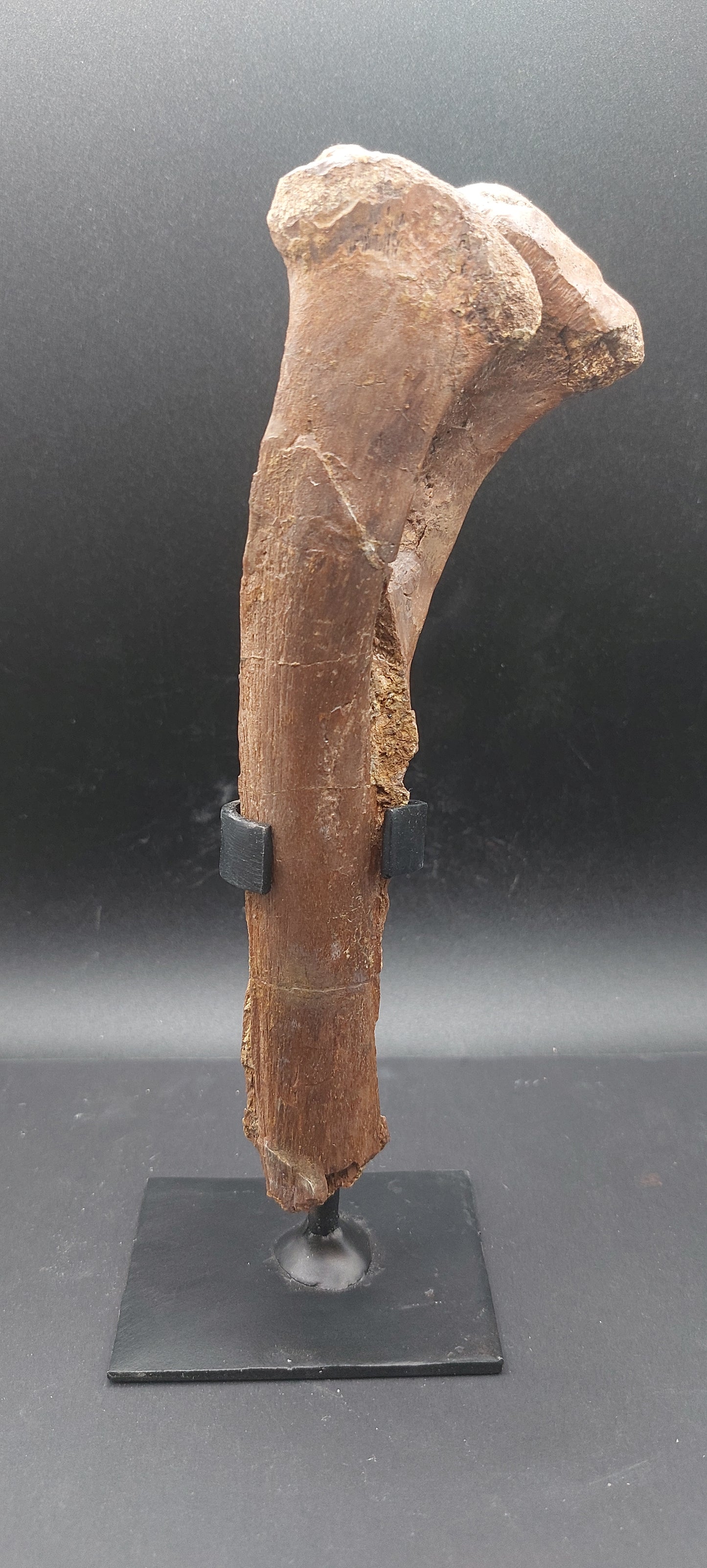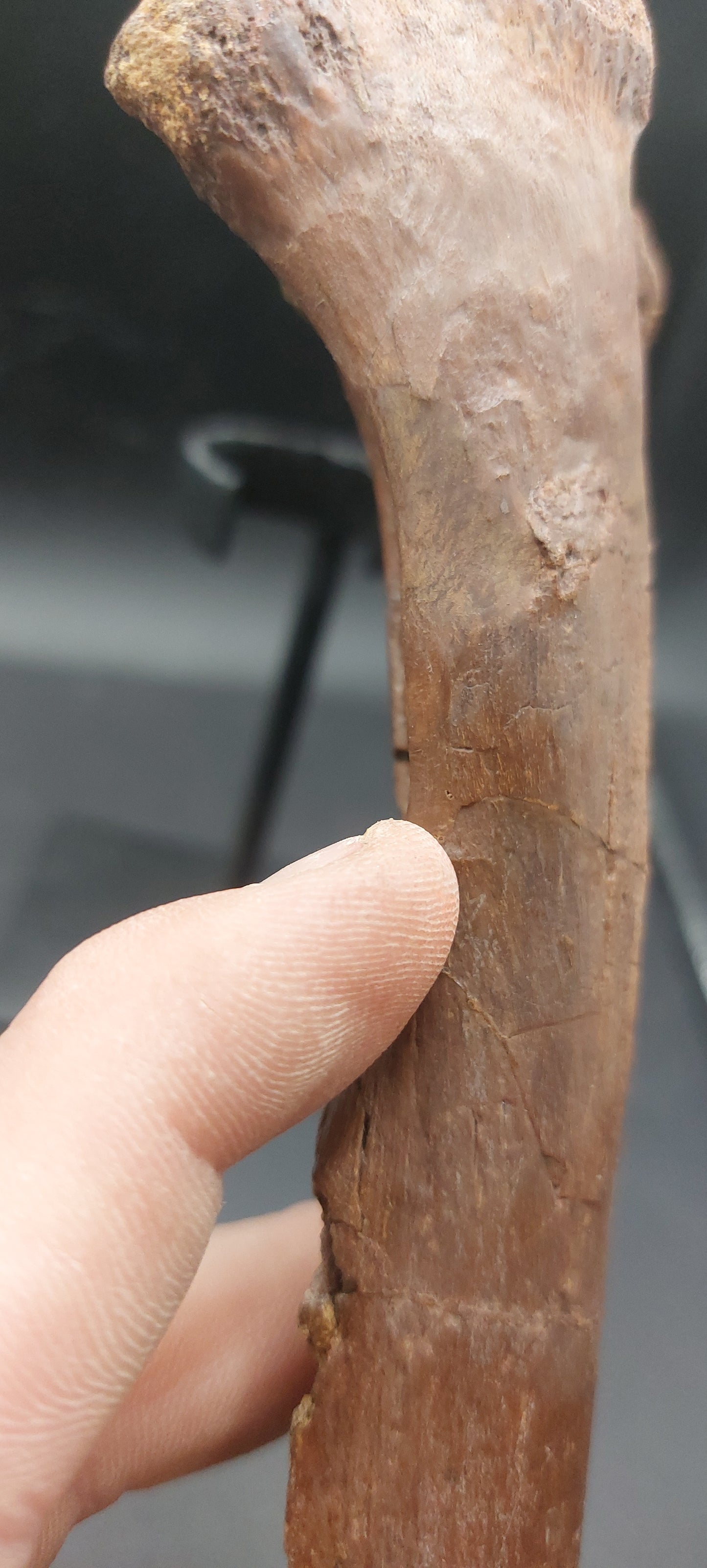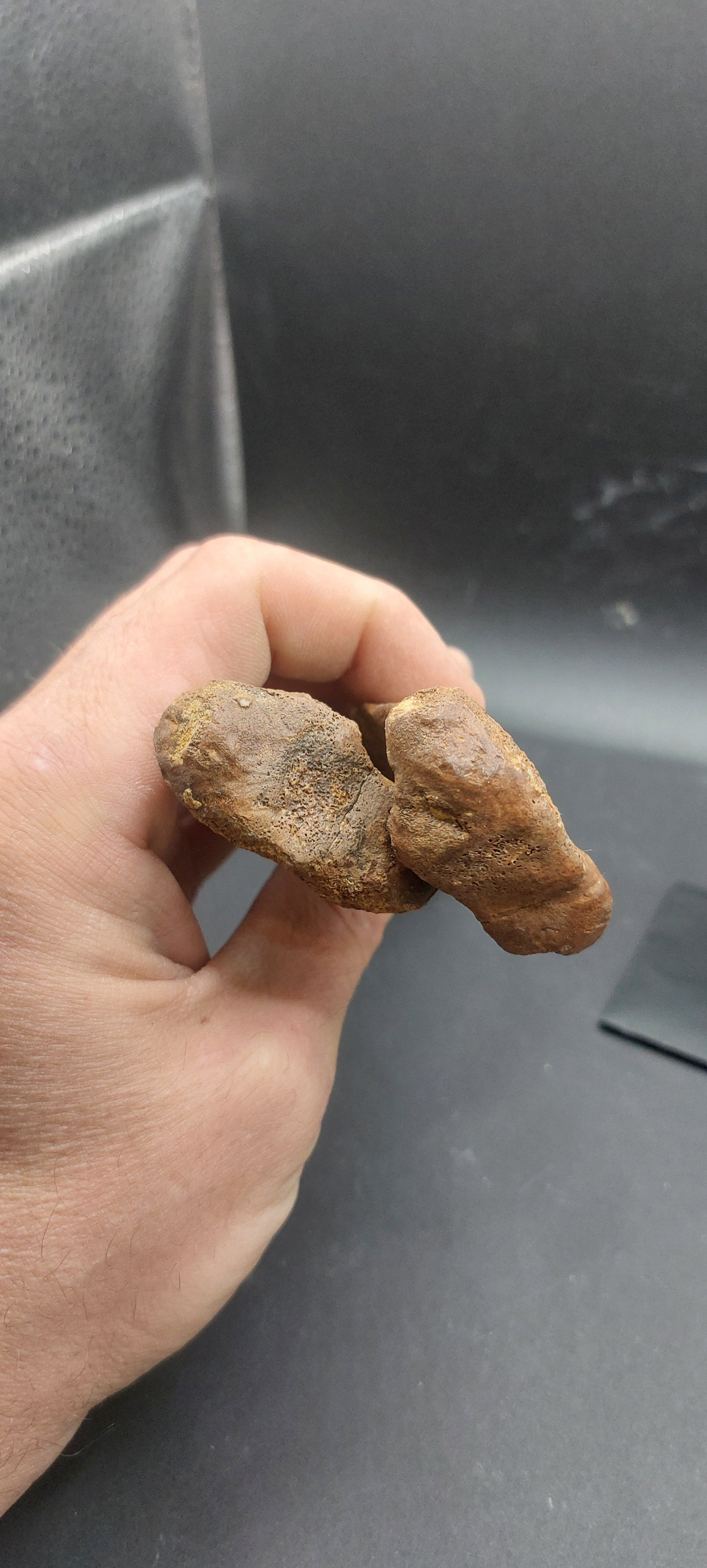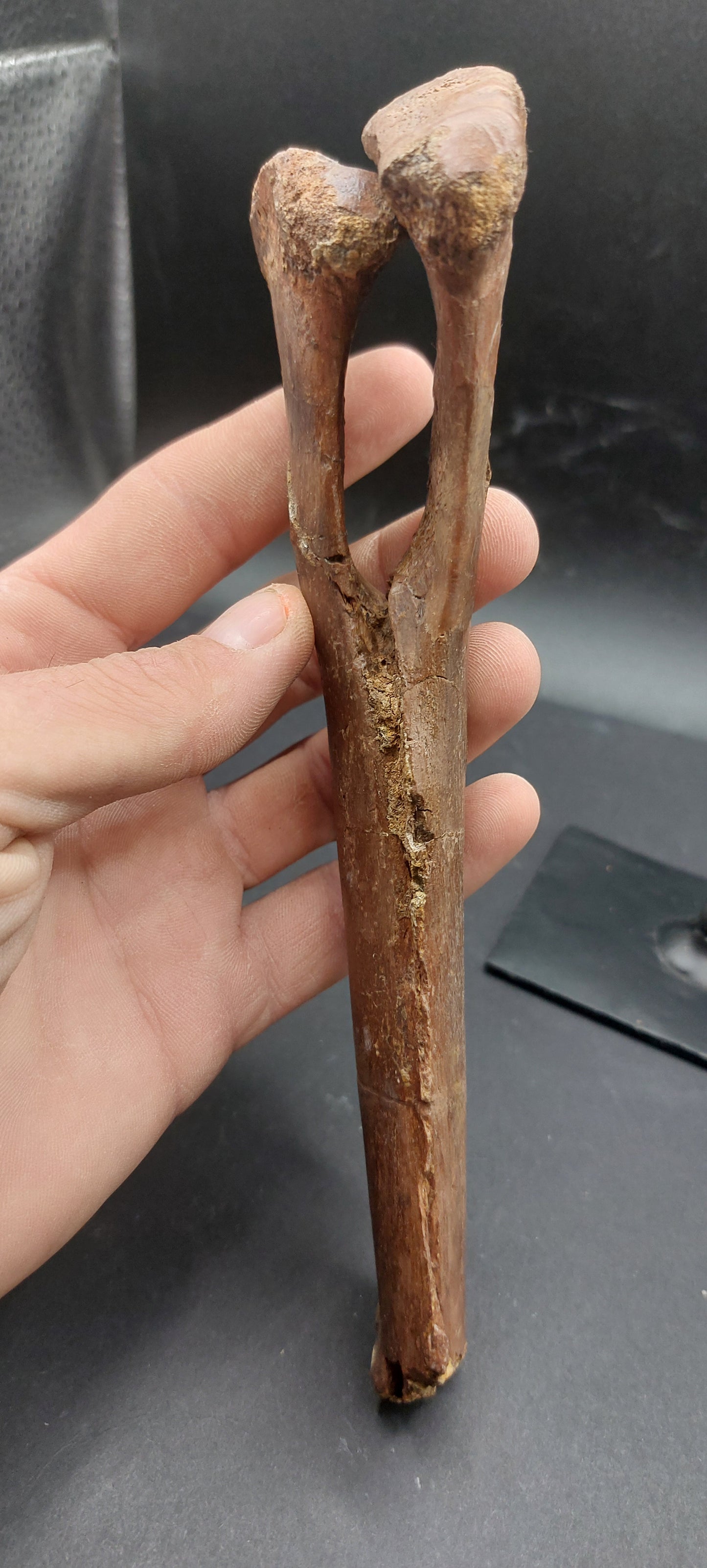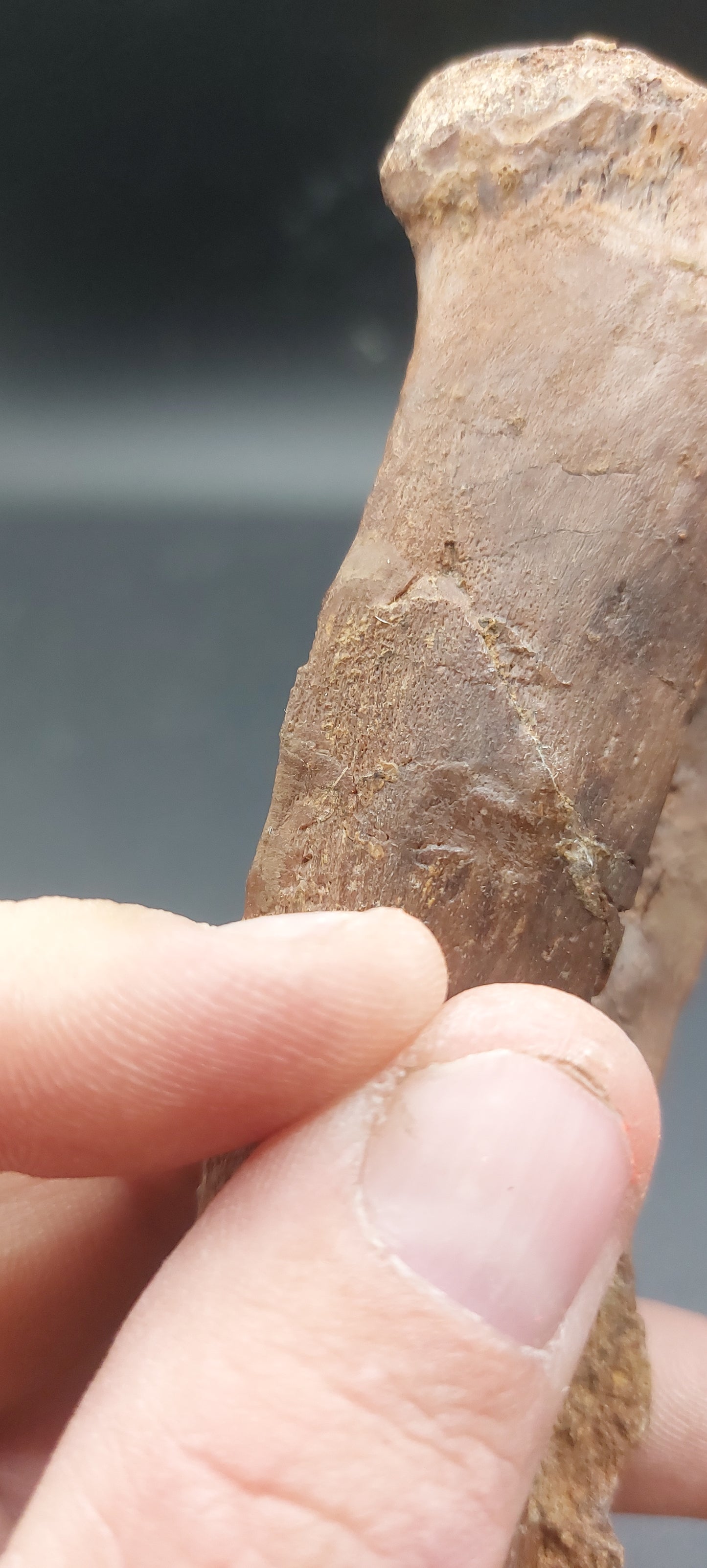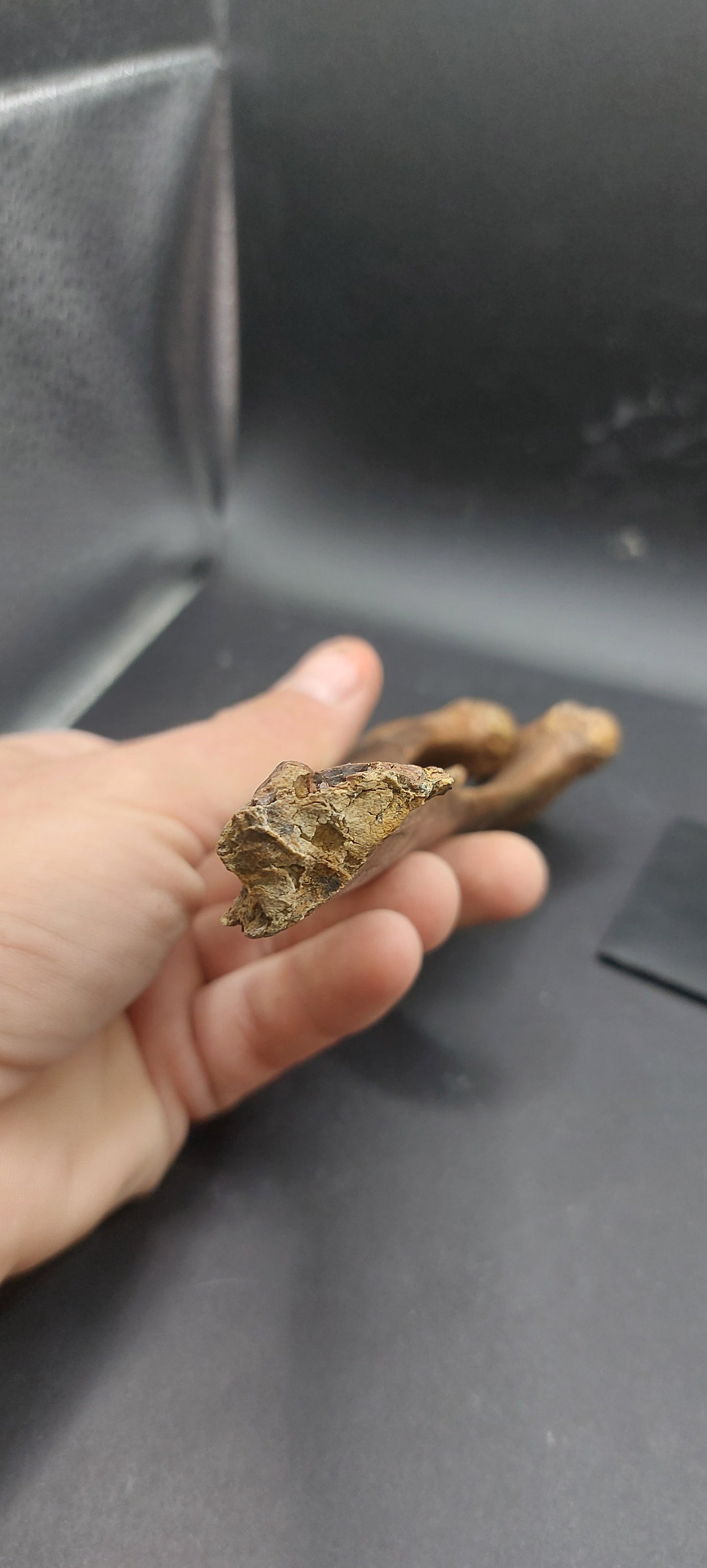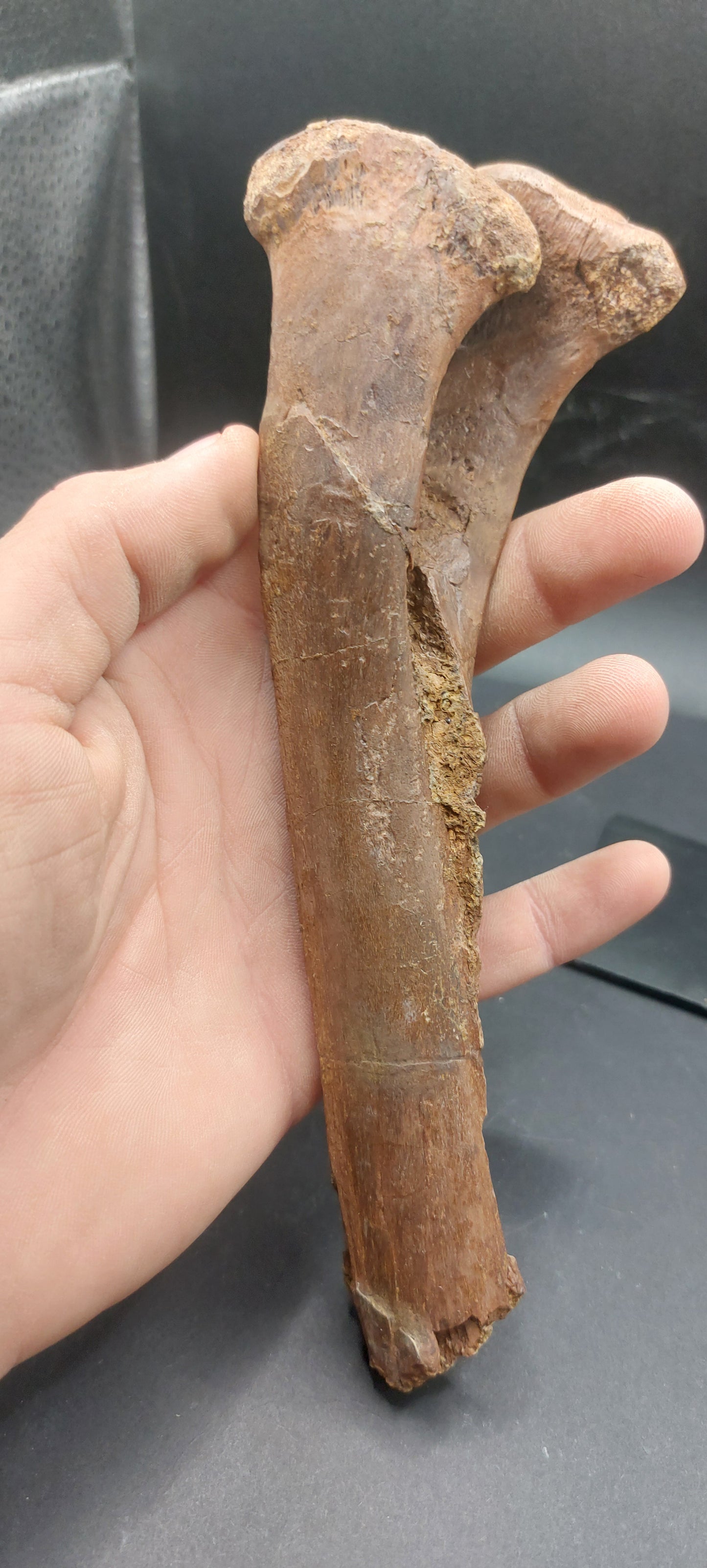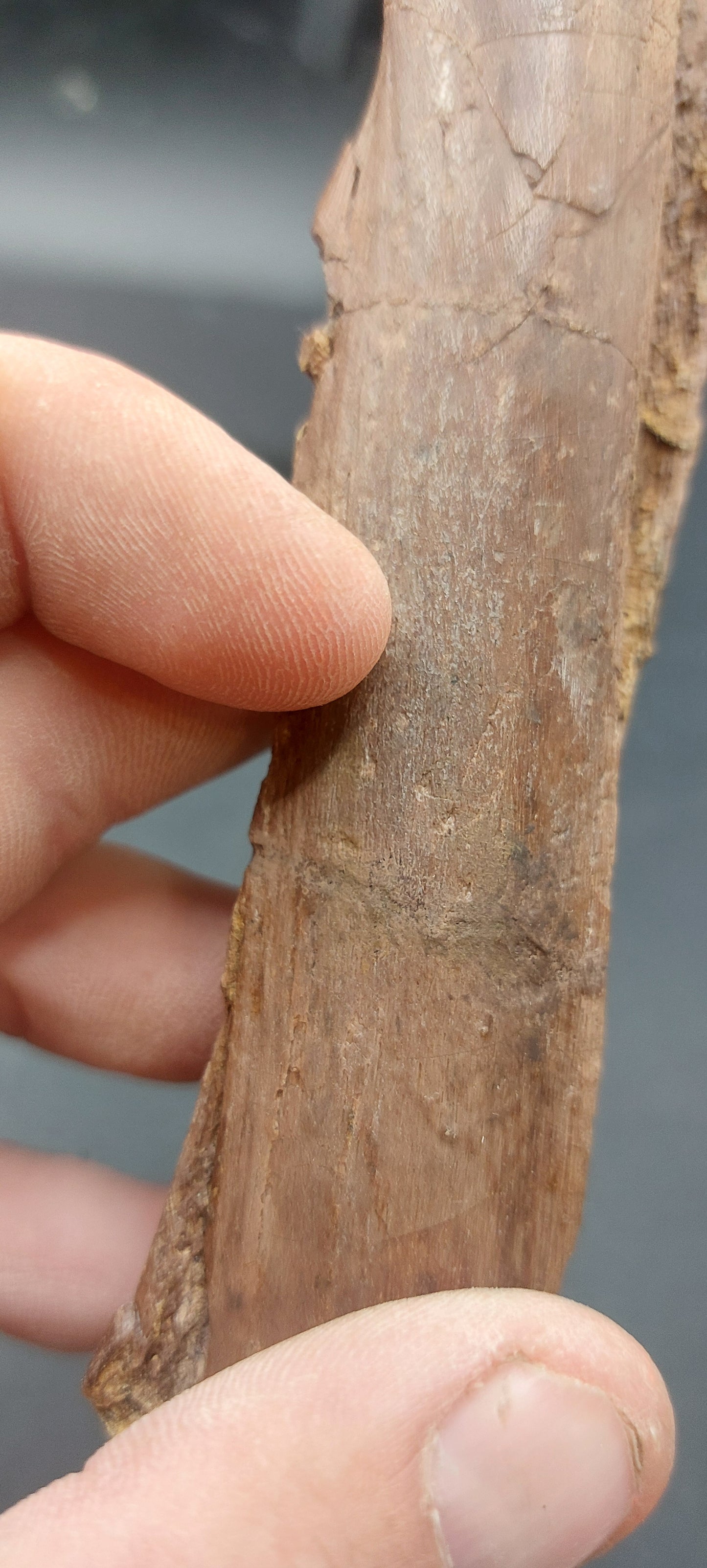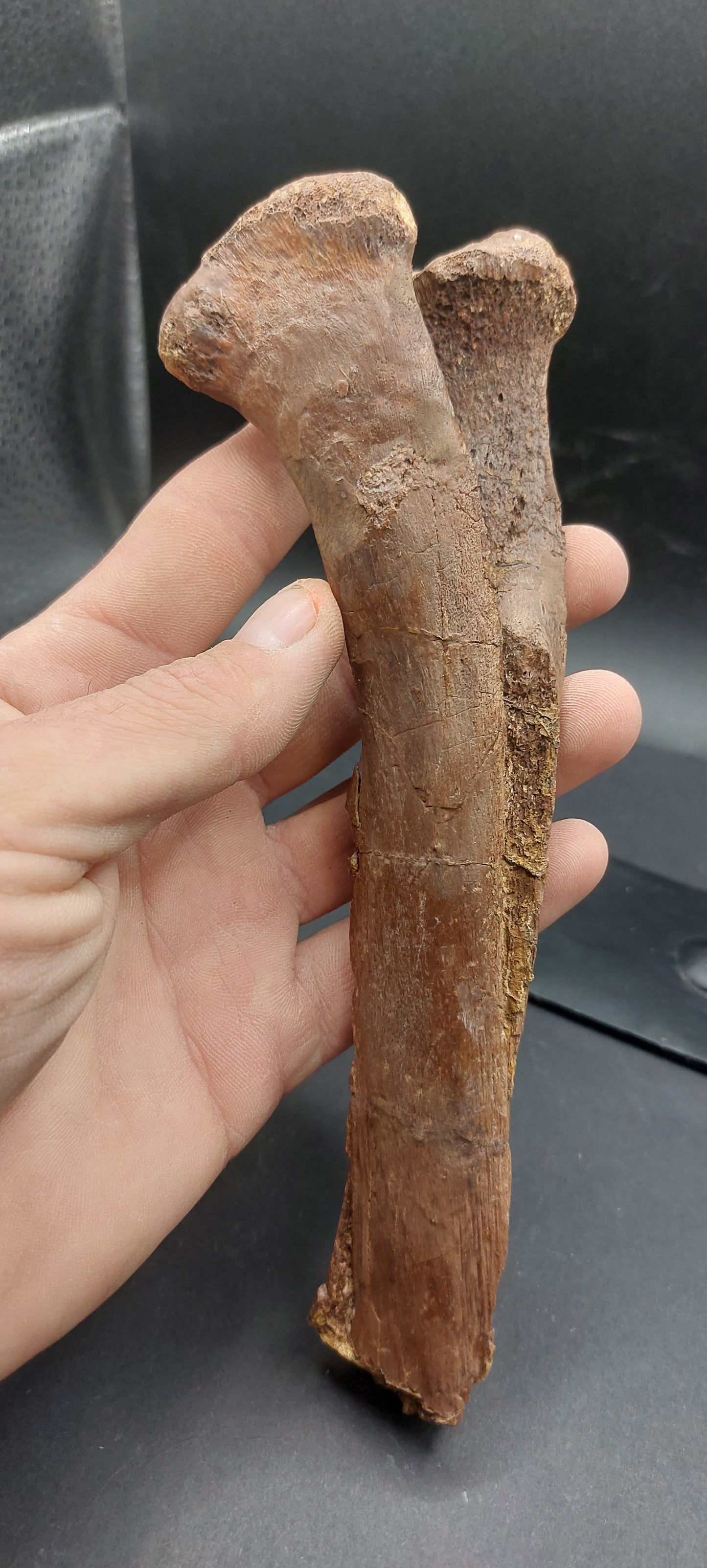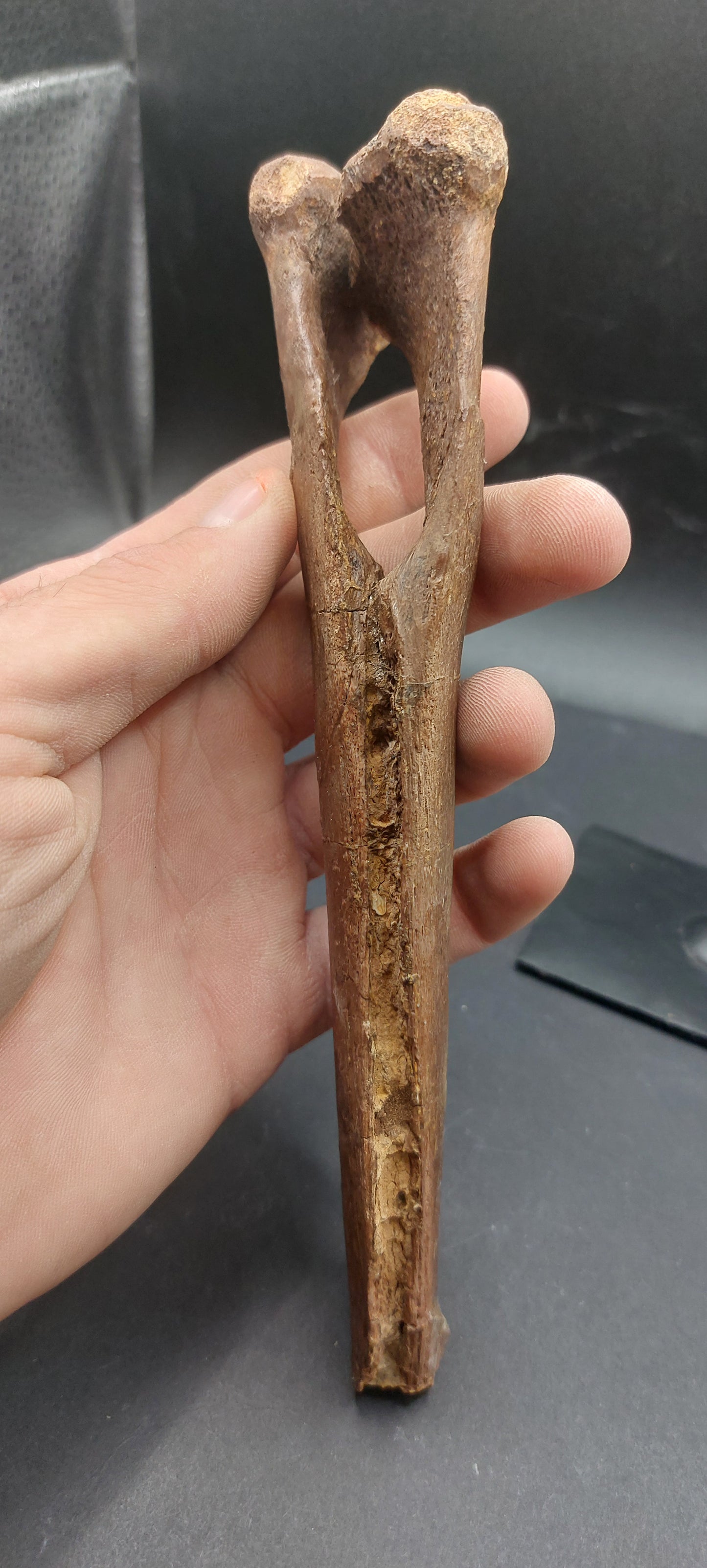Minute Man Fossils
Hadrosaur Chevron-Texas
Hadrosaur Chevron-Texas
Couldn't load pickup availability
Taxa: Indeterminate Hadrosaur Chevron
Geology: Aguja formation
Age: Cretaceous-Campanian
Locality: Brewster County, Texas
The chevron has a small amount of restoration. Mostly crackfill. I point out the restored portions in some of the photos. The stand is included.
Hadrosaurs
Hadrosaurs, or duck-billed dinosaurs, were a diverse group of herbivorous ornithopods that thrived during the Late Cretaceous period (about 100–66 million years ago). They were characterized by their broad, flattened snouts, which resembled a duck’s bill, and their specialized teeth for grinding plant material. Hadrosaurs were bipedal but could also walk on all fours. Some species, like Parasaurolophus and Corythosaurus, had elaborate crests on their heads, possibly used for communication. They lived in herds and were among the most common large herbivores of their time. Fossils have been found across North America, Europe, and Asia.
Aguja formation
The Aguja Formation is a Late Cretaceous geological formation located in Texas, primarily within Big Bend National Park. It dates to approximately 80–75 million years ago and was deposited in a coastal and floodplain environment along the western edge of the Western Interior Seaway. The formation is rich in fossils, including dinosaurs such as hadrosaurs (Kritosaurus), ceratopsians, theropods, and various crocodilians, turtles, and fish. It also preserves evidence of ancient forests and diverse plant life, providing insights into the ecosystems of the Late Cretaceous in North America.
Chevron
A chevron from a hadrosaur is a V-shaped bony structure located on the underside of the dinosaur's tail. These chevrons were part of the tail's musculature and support system, helping to anchor tendons and ligaments. They also played a role in the overall flexibility and strength of the tail, which was important for balance, communication, and possibly even defense. The chevrons are most commonly found in herbivorous dinosaurs, such as hadrosaurs, which had relatively long, muscular tails.
Share
Subscribe to our emails
Be the first to know about new collections and exclusive offers.
















